First documented in the early 1920s, the Magpie is a relatively modern breed with a lot to offer. They make fabulous dual-purpose homestead ducks, with their high egg-laying potential and excellent foraging, and their beautiful, unique markings make them a challenge for poultry fanciers to breed.
Appearance
The breed’s foremost characteristic is their distinctive black-and-white markings, resembling those of their namesake, the European Mapgie. They are mostly white, with a black “cap” above the eyes and a black patch on their back, from their back to their tail and covering their shoulders. This colored patch, ideally, should form a heart-like shape over the shoulders. The rest of the bird should be white. Many individuals have mottling, uneven markings, or excessive dark coloration, although this is considered undesirable for showing. Their colored markings often accumulate white feathers as they age, and may even disappear entirely.
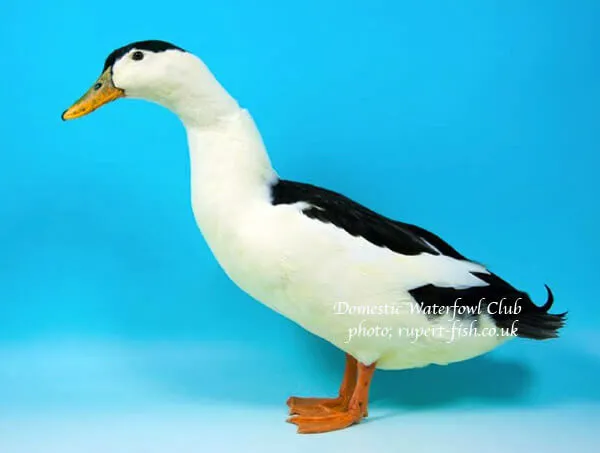
Photo used with permission from The Domestic Waterfowl Club of Great Britain.
Although black is the most common color, Blue is also standardized. Non-standard color varieties include Chocolate, which was developed in Germany, and Dun, which may only exist in Britain. Both are very rare.
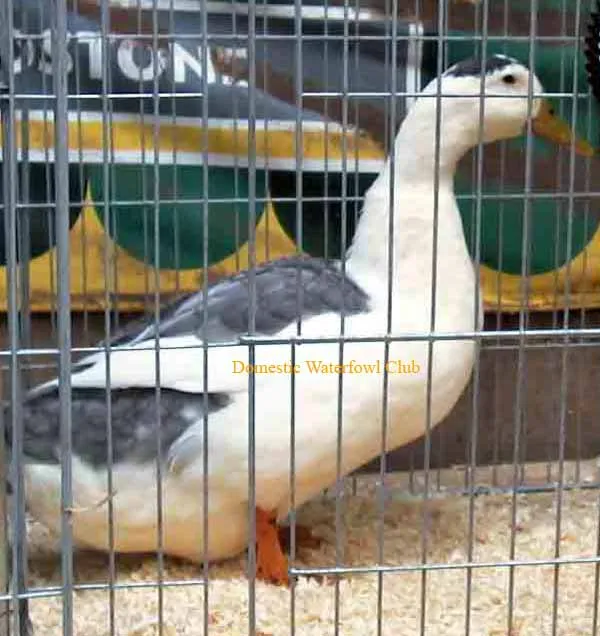
A blue Magpie. Photo used with permission from The Domestic Waterfowl Club of Great Britain.
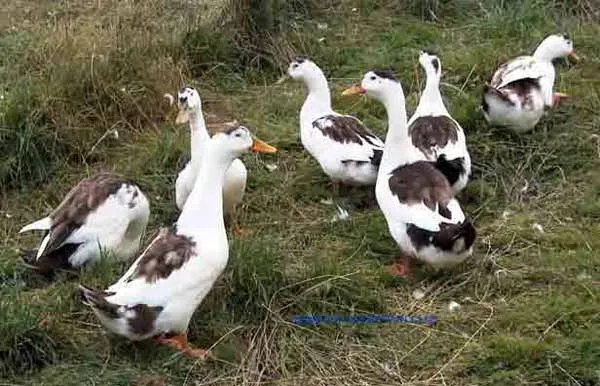
Chocolate Magpie ducks. Photo used with permission from The Domestic Waterfowl Club of Great Britain.
Magpie ducks have long bodies, broad heads, and a somewhat upright carriage, 15-30 degrees above horizontal when relaxed. They have yellow or orange bills in their first year, although they tend to turn greenish as they mature. Their legs are orange, sometimes with black spots.
Usage
Although classified as a “light” breed, the Magpie falls on the upper end of the weight scale for a light duck, with females weighing 4-6 pounds and males weighing 5-7 pounds. They were initially bred to be dual-purpose ducks—good layers, but also suitable as a table bird due to their heavier build and a white breast, which plucks cleanly.
They are very good layers, capable of producing 220-290 eggs a year, although some sources quote lower estimates. The “Paramount” strain, bred by Oliver Drake in the early 1900s, was reported to lay 185 eggs a year. Their eggs can be white, blue, or green. Traditionally, they laid mostly blue eggs; now, perhaps due to outcrossing, white eggs are more common. Their eggs weigh approximately 65 grams (2.3 ounces).
Temperament and Characteristics
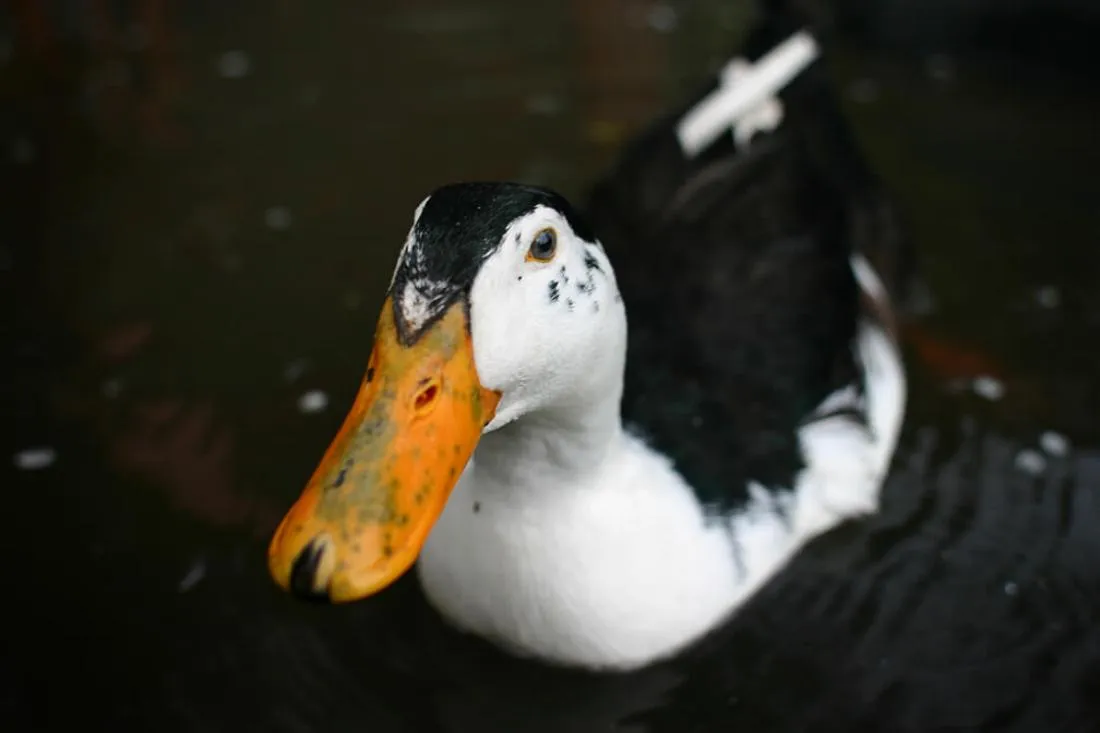
Photo credit: “When’s my birthday?” (CC BY-NC-ND 2.0) by tifotter
Many individuals are good broodies and mothers. They do not fly, and they are reportedly long-lived, with a lifespan of 9-12 years or more.
They were developed to be mostly self-sufficient, and thus they tend to be excellent foragers who can often find a large portion of their own food. Some farms use them to eliminate liver fluke infestations in livestock. They are hardy, very active birds. In general, they are not as skittish and high-strung as breeds such as the Indian Runner, but not as calm and docile as some other breeds.
Breeding and Showing
They are related to the Stanbridge White duck; some say it was perhaps developed from the Magpie, while other sources say the Magpie may have been developed from it. Breeding Magpies together will sometimes result in pure white ducklings. These are called “unmarked” Magpies and are often also called Stanbridge Whites, because unmarked Magpies, bred to each other, will breed true.
Magpies are commonly used for showing, but the difficulty (even near-impossibility) of breeding “show-perfect” specimens has discouraged many breeders from keeping the breed. They are considered one of the most difficult breeds to breed for show, as show standards demand very specific markings, and “well-marked” birds do not consistently produce well-marked offspring. Hatchery Magpies typically have aberrant and asymmetrical markings.
History
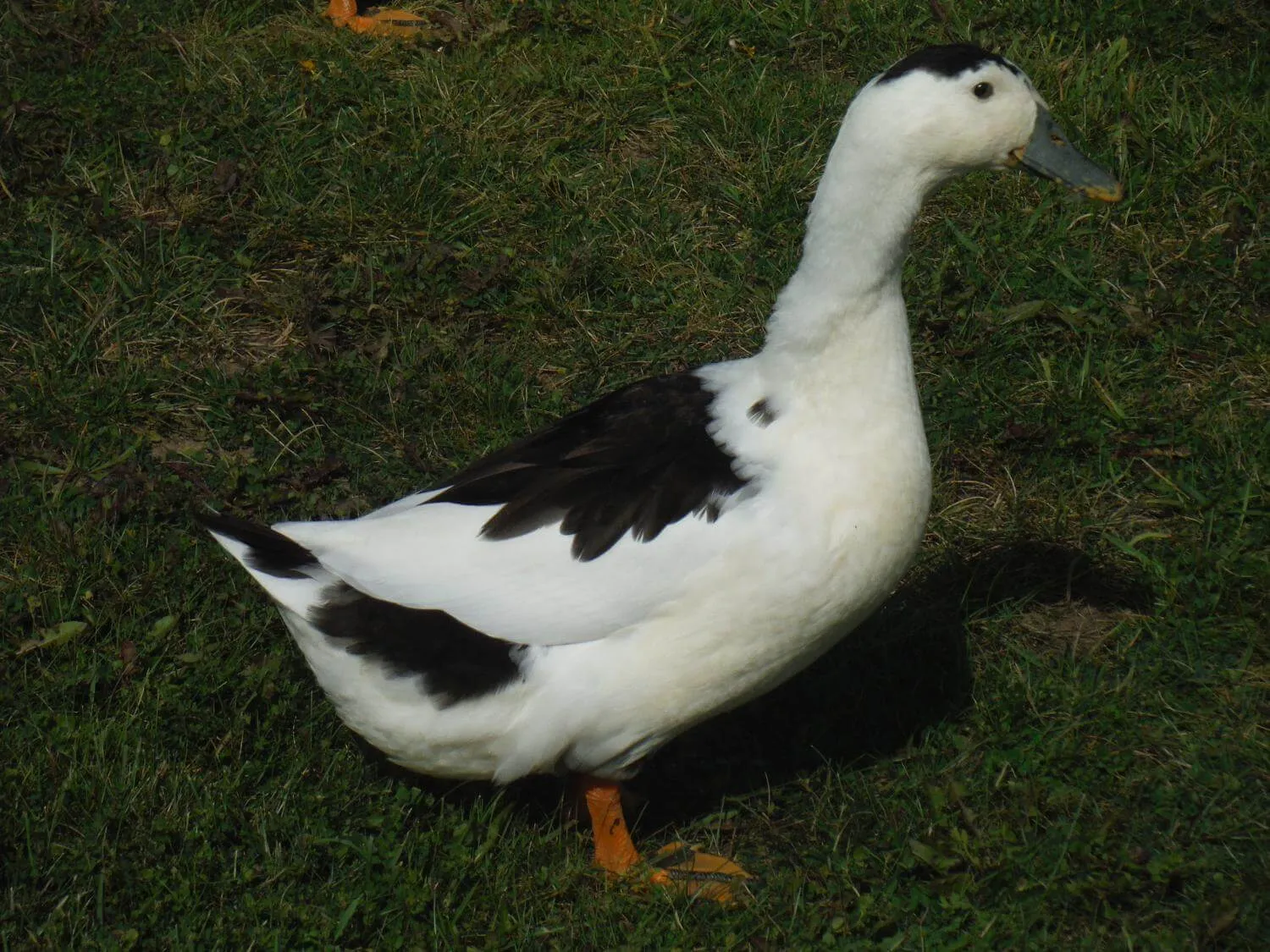
Photo credit: Yoopery, CC BY-SA 3.0, via Wikimedia Commons
The Magpie duck was bred in the early 1920s, after World War I, by M.C. Gower Williams from Wales and Oliver Drake from Holme-on-Spalding-Moor in Yorkshire. The exact ancestry of the Magpie duck is unknown, but there is breeding documentation dating back to the 1920s. It’s highly likely that Mapgies have Indian Runner ancestry. They may also have been developed from the Huttegem duck, an old Belgian breed with Magpie-like patterning and conformation.
The breed was popular for showing in the 1920s and 1930s. In 1926, the Magpie was entered into the British Waterfowl Standards. After that, they nearly disappeared, but were revived again in the 1980s. In 1963, Isaac R. Hunter from Michigan imported some Magpie ducks to the US. They were standardized by the American Poultry Association in 1977.
Popularity
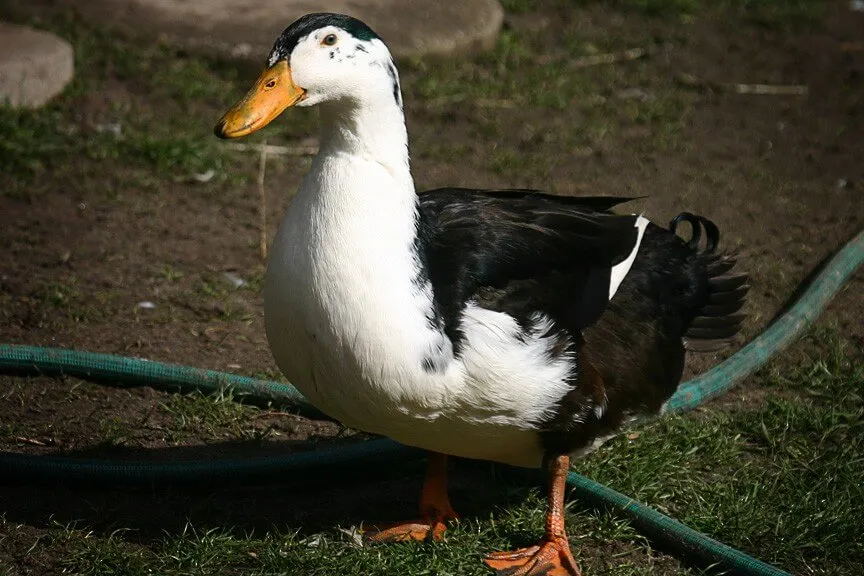
Photo credit: “Chewy Pie” (CC BY-NC-ND 2.0) by tifotter
Today, the Magpie remains a rare breed, although their exact status and population is mostly unknown. They are listed as “Threatened” by the Livestock Conservancy. In 2007, the FAO listed their status as “critical.” However, on the 2021-2022 RBST watchlist, they were not listed as a “priority” breed.
Regardlessly, they are a lovely breed that deserves more attention and supporters.
View this post on Instagram
Leave a comment
Your email address will not be published.